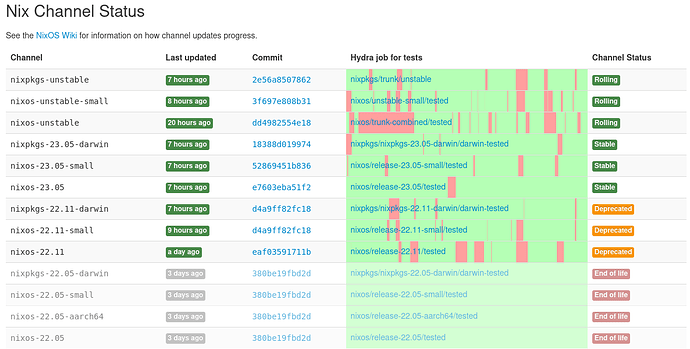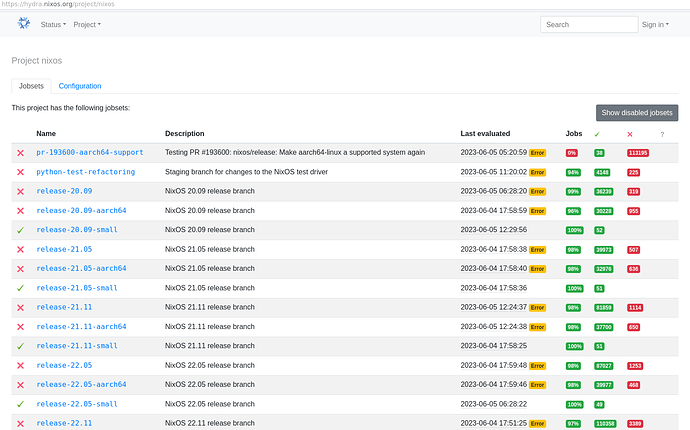I’m wondering what it means in practice for an old NixOS release to be “deprecated” or “end of life”?
You can find references to old NixOS releases being deprecated or end-of-life a few different places. For example, from the nixos-23.05 release announcement, it appears that nixos-22.11 is now deprecated:
Also, from https://status.nixos.org/, you can see that nixos-22.11 is tagged as “Deprecated”, and nixos-22.05 is tagged as “End of life”:
However, I’m wondering if there is a canonical reference somewhere for what it technically means for a release to be “deprecated” or “end of life”?
For instance, from @RaitoBezarius’s comment above:
The 22.11 release is now officially deprecated and will cease to receive updates and security fixes after 2023-06-31
However, my understanding is that even after 2023-06-31, the following things will still be true:
- The
release-22.11GitHub branch will still exist. Interested users can still send PRs fixing things. - The hydra job building the
release-22.11GitHub branch will still exist, and updates to that branch will still get built. - The automatic process that updates the
nixos-22.11GitHub branch and corresponding NixOS channel from the results of Hydra will still run. - End users can still use the
nixos-22.11branch/channel.
I imagine the NixOS security team will likely not prioritize fixing issues for nixos-22.11 after 2023-06-31. But any interested user/committer could still send PRs, and they would eventually make it to the nixos-22.11 channel, right?
At some point, the channel update process for old releases is turned off, so the nixos-XX.YY branch stops getting updated on GitHub. And then (possibly at the same time?) the Hydra job for release-XX.YY is disabled. But currently it looks like Hydra jobs still exist back to release-20.09:
So my question is, in practice, what is the significance of a NixOS release being considered “deprecated” or “end of life”?

